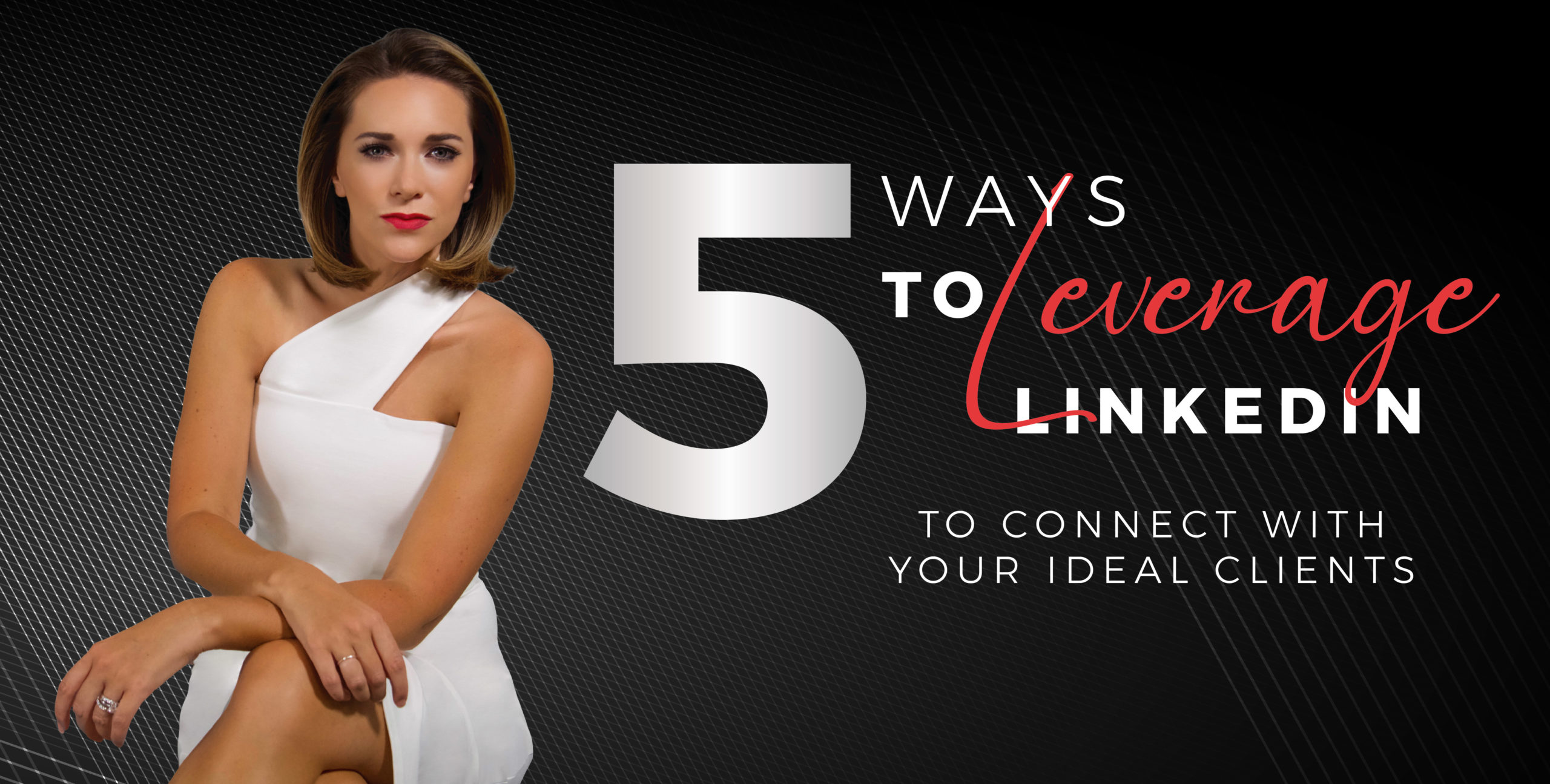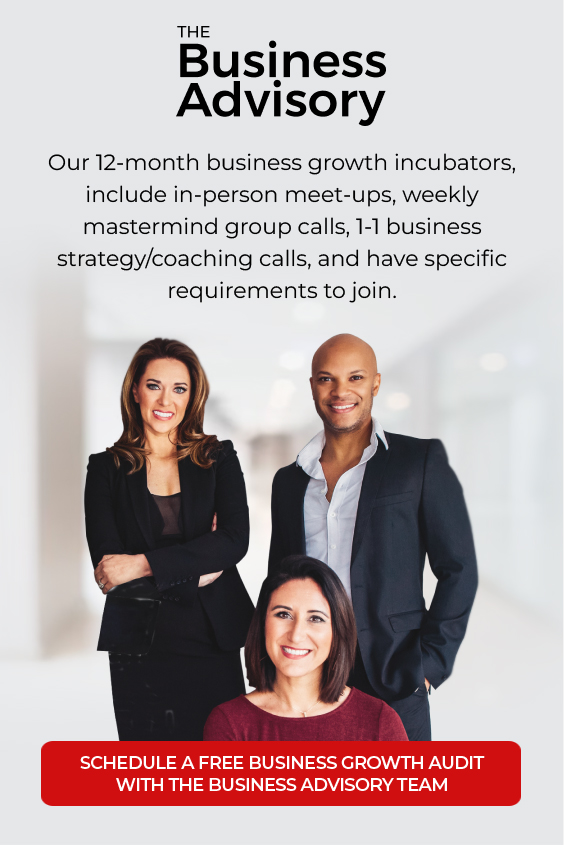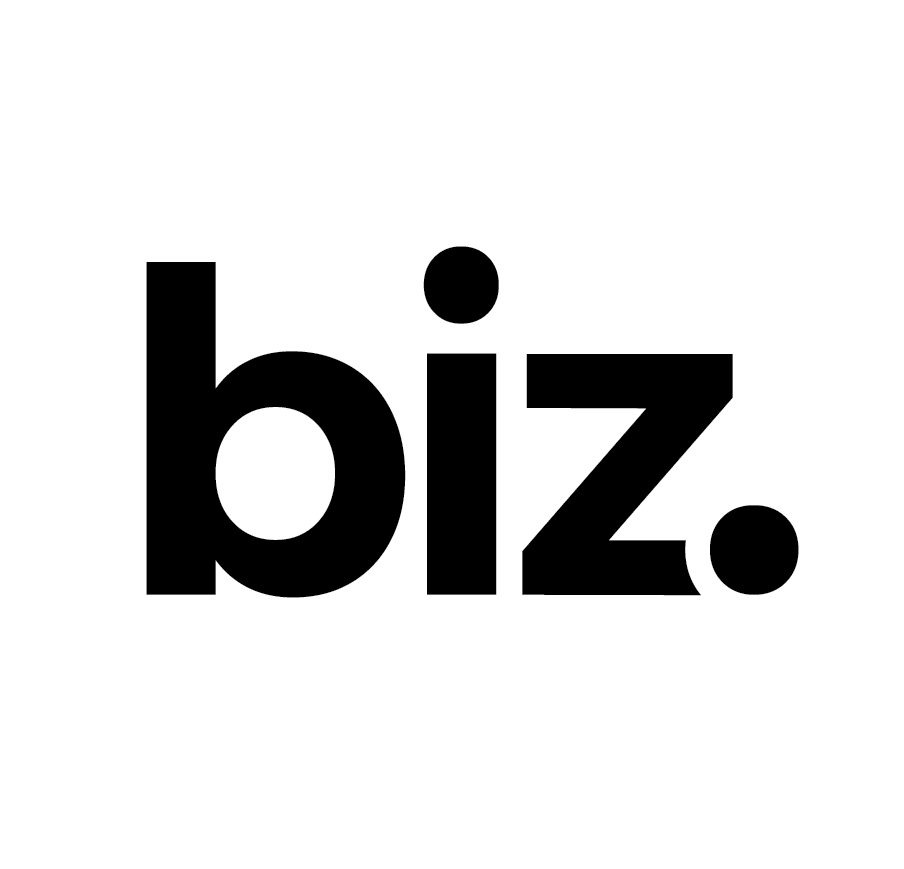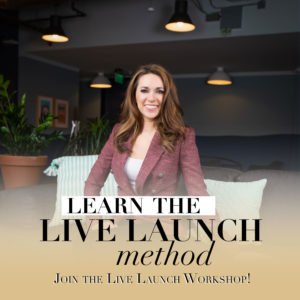Let’s talk about one of the most underrated platforms for showcasing your expertise…LinkedIn!
Truth is, while all these big name influencers are trying to make it on IG and TikTok (and hey, omnipresence is important when it comes to visibility) they’re forgetting about the one platform where they could be reaching an audience who can likely afford their services. An audience that has barely been tapped into, because not as many people are using the platform for thought leadership as you might realize!
While IG, Facebook and even TikTok are more social platforms that have that personal touch (like sharing photos of your dog and pictures of your food…guilty), LinkedIn started out as a professional platform that most people were using for job searching, networking or hiring. And while it’s still an outstanding platform for networking, it’s evolved into much more than just that over time.
For example: LinkedIn just recently announced it’s brand-new Creator Mode, giving you a chance to transform your resume-like profile into a place of thought leadership, content and conversation. With the creator mode setting on, you’re able to showcase to your followers what topics you talk about most often through a series of hashtags displayed at the top of your profile (these can be changed), you’re able to grow your following without having to send connection requests to a bunch of people who may not fit into that ideal client avatar just yet, and your content is prioritized so people can see what you’re posting about.
With a bunch of new changes rolling out on the platform, now is the perfect time to start leveraging LinkedIn to attract your ideal audience, generate more leads and position yourself as an industry expert. Below we’re going to share a few tips to help you start really maximizing your time on the platform and getting the best results for your LinkedIn marketing strategy.
Optimize your profile. First things first: your profile, “about” section, and experience should all be optimized and up-to-date. Your headline is actually one of the most important parts of your profile, so you want to make sure that it’s updated, SEO-friendly and speaks to your ideal clients. LinkedIn expert and author Scott Aaron said it best in our most recent LinkedIn masterclass (which, you can still grab access to by joining our Marketing Mastery Club) that when it comes to headlines, you want to think in terms of searchability. For example, if you’re a personal branding expert, no one is going to be searching for “someone who empowers entrepreneurs to create content that aligns with their personal brand.” But, they might search “brand coach,” “personal brand expert,” or something along those lines. So, when you’re thinking about the needs of your ideal client, think about what they’re searching for (literally!). You should also be sure to have your past experiences listed on your profile, regardless of how long ago it’s been since you’ve done it. You never know who might connect and resonate with your past experience, because it could be the very thing that sets you apart from someone else. And this goes without saying, but make sure your profile is clear, up-to-date and industry appropriate. Last but not least…LinkedIn recently rolled out cover stories, which is a great way to introduce yourself, showcase your expertise and give people a glimpse of your personality and energy in less than 30 seconds. Your cover story is a video that stays on your profile photo so that people can “get to know you” upon visiting your profile!
Utilize all platform features. Video content isn’t just great for Reels and TikTok — it’s actually an important piece of your content strategy on LinkedIn, too! A general rule of thumb: we like to keep videos between 30-90 seconds, and under 3 minutes if possible. You can use free tools like Kapwing to add subtitles for those who may be viewing without sound. The documents feature is great for creating carousels similar to Instagram, where you may be sharing information, tips, “how-to” content or graphs and charts that are educating your followers. You can publish articles when you’re writing long-form content that exceeds the LinkedIn character limit (remember: you don’t have to reinvent the wheel each time. Repurpose a blog post or turn a podcast episode into an article!), and you can use polls to gather market research from your followers, like figuring out pain points. If you’re a sales coach, maybe you’d ask “What’s one thing you struggle with when it comes to sales?” Is it closing? Booking consults? Communicating the value of your offer? Create a poll, and open up the conversation (hint: you can see how people vote on your poll, so that’s a great way to create dialogue with voters. We’ll get into that later when we talk about messaging strategy.) And then you have your actual status posts that you’re probably used to seeing most often (you can post a simple status or add a photo to generate even more engagement). Mix it up, provide value (don’t constantly pitch or promote your services), and find a consistency that works for you. But, posting 3-5 times per week is a solid baseline.
Bottom line: people are consuming content for a number of reasons: to learn something, because it’s relevant or inspiring, because they want to stay on top of industry trends, or because this is going to help them get better results in some aspect of their life. And if you want them to consume if from YOU, they need to trust that you know what you’re talking about, resonate with your methods, perspective or opinions, and stay consistent.
Share content that people want to spend time on. The LinkedIn algorithm isn’t impossible to crack, like some other platforms (whyyyy are these people going viral?!). One thing to know, though, is that LinkedIn is deciding what content is valuable based on users’ dwell time. What exactly does that mean? Basically, anyone can throw a post a like or a comment and keep it moving. And many people were doing that, just to generate more engagement, but weren’t actually taking the time to read — or care — about the posts they were interacting with. So, lo and behold: we’ve got dwell time. The actual time people are spending on your content MATTERS. So, it’s important to create scroll-stopping content around topics people really care about. What’s happening in your industry? What conversations aren’t being had already by other thought leaders in your space? What can people learn from you? How do you make them feel about themselves and their own situations? These are just a few questions to ask yourself when creating content that people actually want to spend their time reading.
Spend just as much time engaging as you are on content creation. Content is important. There’s no denying that. But, it’s just as important to make yourself visible, have meaningful conversations with potential clients or partners, and build relationships. Carve some time out of your day to engage on a few posts relevant to your brand, industry or opinions (or even opposite from your opinions!) and ask yourself, “how can I share my thoughts in a way that adds value to this conversation?” The cool thing about LinkedIn, is that unlike Instagram and TikTok, you can see what your connections are engaging with. You can see what they like, what they want to hear about, and what their thoughts and feelings are based on what they’re interacting with on the platform. Use that to your advantage! The most important thing to remember, is that you have to create meaningful conversations, and not just contribute to the noise. Which brings us to point number three.
Don’t spam outreach. The golden rule of LinkedIn: don’t mass pitch your services! People are already skeptical on LinkedIn because they’re getting mass-pitched all.day.long. If you don’t know anything about anyone except that they look like they could be a qualified prospect, that’s not a reason to cold message them and offer your services. And with the overuse of automation tools, the platform is really starting to crack down on mass messaging in general. Which means, you are limited to about 100 connections per week, so be strategic about who you’re inviting into your network, and send wisely ( keep it to less than 20 outbound connection requests per day). The good news is: with creator mode — and even if the feature isn’t available to you just yet — your primary action can change from “connect” to “follow,” which means people can follow along with your content without actually being connected. There’s no right or wrong, but depending how you want to use your account, this might be beneficial for you to change. Connections should be reserved to those who are your ideal client avatar, or someone you could potentially collaborate or partner with. To change your primary function, you can go to: Settings > Visibility > Visibility of your LinkedIn Activity > Followers > Make Follow Primary.
If you do decide to send a short message with your connection request, keep it short and to the point. Tell them your intentions of connecting (Did you resonate with their last post? Did you hear about them through a podcast or on Clubhouse? Are you interested in learning more about their work?) Be transparent, and don’t be slimy! Like we talked about above, there are other great ways to start conversations in the DMs aside from just sending a bunch of connection requests out (but know that you can only message those you are connected to). Pay attention to comments people are living on other thought leaders’ posts in your industry that you can answer, solve, or relate to. Maybe you can offer that person a free resource based on a post or comment you saw, where they shared that they’re struggling with something you help solve. Maybe you want to explore their thought process a little bit further. Maybe they voted on your poll that they can’t get consults on the books, and you’ve got a helpful free guide for that.
Like anything else, value is going to be key to your LinkedIn marketing strategy. So: give without expecting in return, build authentic relationships (not transactional), keep showing up consistently, and watch your presence grow.
For even more in-depth LinkedIn personal branding strategy, grab the replay of our May masterclass with Scott Aaron!










